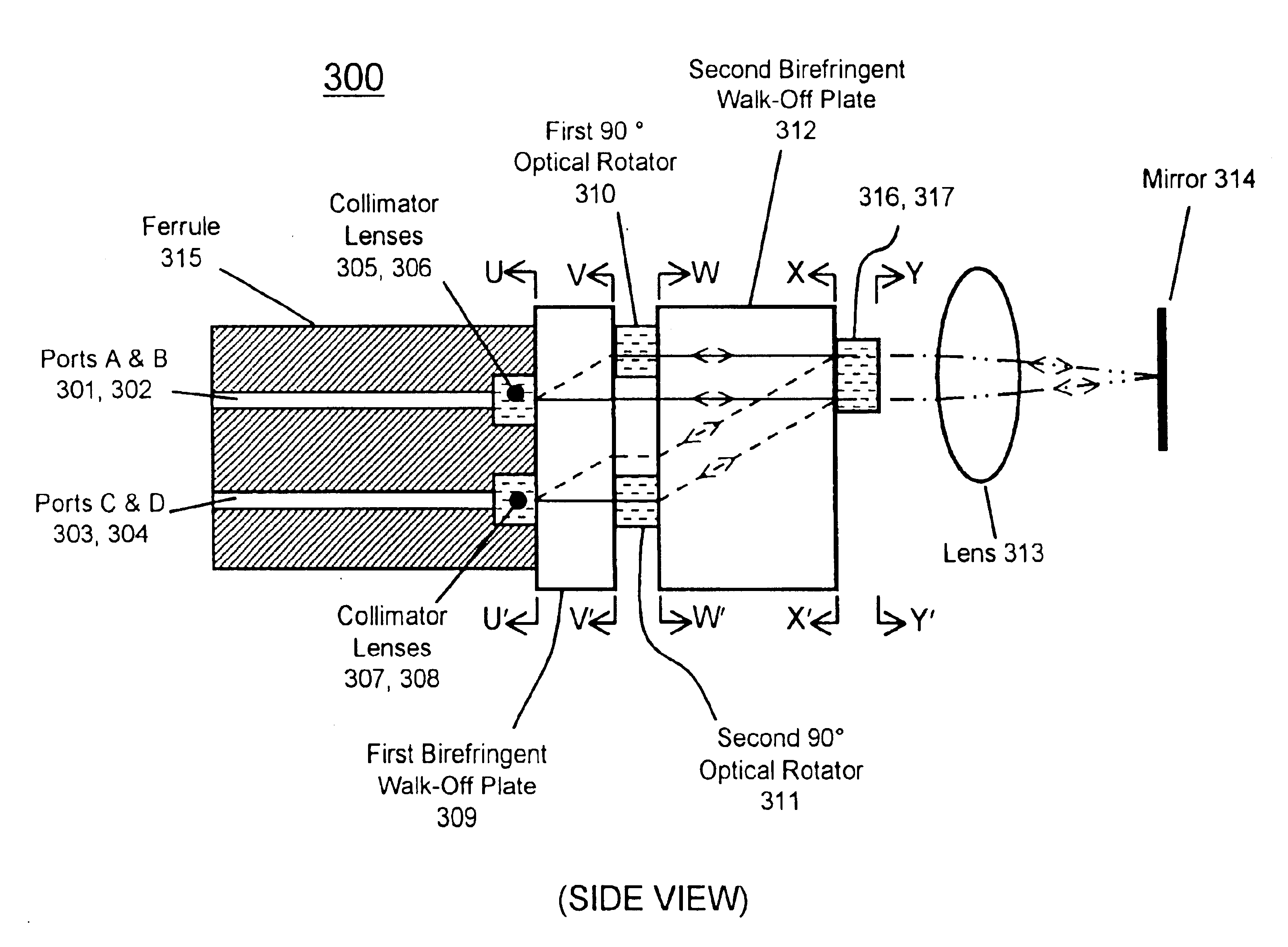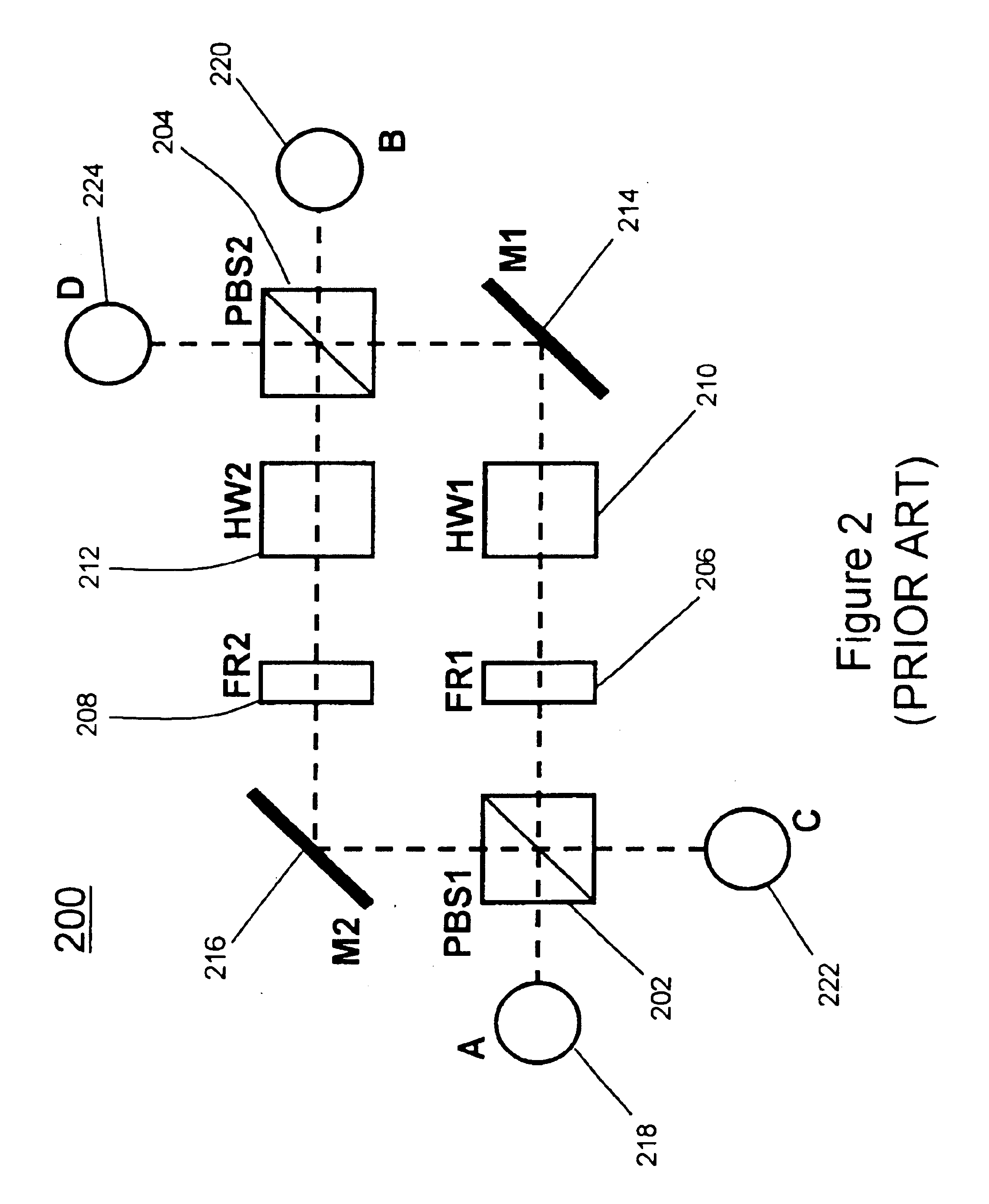Reflection-type optical circulator utilizing a lens and birefringent plates
a circulator and lens technology, applied in the field of optical systems, can solve problems such as optical alignment difficulties, and achieve the effect of facilitating the alignment of optical ports, reducing the number of required optical elements and the resultant device siz
- Summary
- Abstract
- Description
- Claims
- Application Information
AI Technical Summary
Benefits of technology
Problems solved by technology
Method used
Image
Examples
first embodiment
The operation of circulator 300 is now described with reference to FIG. 6. FIG. 6 is a sequence of cross sections through the circulator 300 illustrating the locations and polarization states of port images created by the light of signals and sub-signals propagating therethrough. These cross-sections are all drawn as viewed from the left side of the device 300 of FIG. 3 and are taken at the labeled cross-sectional planes U-U′, V-V′, W-W′, X-X′, and Y-Y′. These cross-sections correspond to locations similarly labeled on FIG. 3. In the cross sections of FIG. 6, the centers of labeled circles denote the positions of port images created by sub-signals propagating through circulator 300 as projected onto the respective cross section. Concentric circles of different sizes indicate overlapping or co-propagating sub-signals. The sizes of these circles in the diagrams of FIG. 6 have no physical significance. Barbs on the circles of FIG. 6 indicate the orientations of polarization planes of t...
second embodiment
Aside from the means of superimposing sub-signal images, other aspects of the operation of the second circulator embodiment, circulator 700, are identical to those already described for circulator 300 and are not described in further detail here. The second embodiment, circulator 700, has the advantage that a birefringent wedge of precise thickness and orientation is not required to superimpose the various sub-signal images. Precise positioning of the various sub-signals in circulator 700 may be accomplished by slight tilt adjustments of the beam-turning reflector 701 and / or the polarization beam splitter 702.
An improved optical circulator has been disclosed. The optical circulator in accordance with the present invention is a reflection-type optical circulator, in which the paths of throughgoing light rays are folded back upon themselves. This minimizes the number of required optical elements and the resultant device size by using each optical element two times for each light ray. ...
PUM
 Login to View More
Login to View More Abstract
Description
Claims
Application Information
 Login to View More
Login to View More - R&D
- Intellectual Property
- Life Sciences
- Materials
- Tech Scout
- Unparalleled Data Quality
- Higher Quality Content
- 60% Fewer Hallucinations
Browse by: Latest US Patents, China's latest patents, Technical Efficacy Thesaurus, Application Domain, Technology Topic, Popular Technical Reports.
© 2025 PatSnap. All rights reserved.Legal|Privacy policy|Modern Slavery Act Transparency Statement|Sitemap|About US| Contact US: help@patsnap.com



